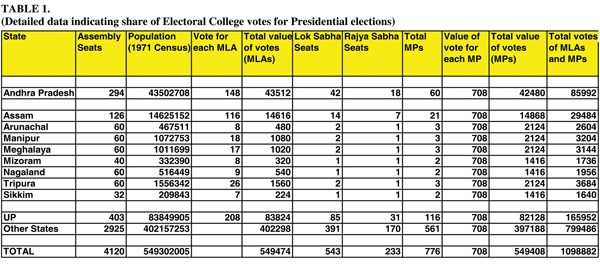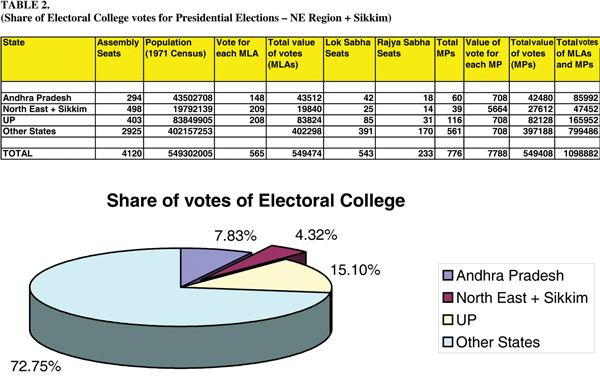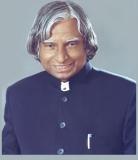Archives
THE PRESIDENTIAL RUN
Both the power blocs, the UPA as well as the NDA, have been reluctant to take the first steps in announcing their respective candidates. In a situation where the regional parties like the SP, TMC, Dravidian parties, NCP and so forth, have been holding the government to ransom, Mamata Banerjee seemed to have pulled off a political coup by announcing ‘her’ candidates after meeting Mulayam Singh Yadav of the SP. The former President APJ Abdul Kalam, Prime Minister Manmohan Singh and the Vice President Hamid Ansari’s names were thrown into the mix probably without their knowledge. If the so-called alliance between the TMC and the SP had held, the leverage would have been considerable. However, Mamata had not reckoned on the wiles of the slippery eel of UP and Indian politics. Only after a couple of days, the eel had slipped out of her grasp, leaving Mamata fuming and sulking. The SP announced its support for the UPA candidate Mr. Pranab Mukherjee. Mr. Mulayam Singh Yadav probably still had the after-taste of the recent anniversary dinner of the UPA where he had been an honoured guest.
Meanwhile Mr. P.A. Sangma had joined the fray after receiving support from the ‘Amma’ of the AIADMK and Mr. Naveen Patnaik of the BJD. It was probably not enough to be a headwind but it was a wind nonetheless for Mr. Sangma. Former President Kalam then ‘withdrew’ from the race probably because he saw that there was no consensus. Doubtless, it is below the dignity of any former President to fight elections. His exit paved the way for a two horse race. From then onwards, events picked up speed. The NDA finally declared Mr. Sangma as their candidate. But it was a house divided. First the JD(U)’s Nitish Kumar has more or less declared that it would support Mukherjee. Another alliance partner, the Shiv Sena, also has the same sentiments. Other parties like Mayawati’s BSP also declared support for Mukherjee thereby denting whatever Sangma’s slim chances that remained.
The largest ‘left’ party, the CPI(M), meanwhile found themselves in a quandary. The ‘left’ had consistently opposed the ‘imperialist’ and ‘neo liberal’ policies of the Congress. They had tried to pull the rug from under the feet of the UPA on the nuclear issue during UPA I. But the CPI(M) are still licking their recent wounds after Mamata had dealt them a massive blow in their own den in West Bengal. It was therefore not a surprise when the CPI(M)’s so called principled stand was thrown to the gutter. For the CPI(M), it has been the classic case of ‘my enemy’s enemy is my friend’. This stand was not so subtly declared when the Karats ‘congratulated’ Mukherjee. What the Presidential election has thrown up is therefore not any principled, well-reasoned or consultative approach towards elections to the highest constitutional post. It has thrown up the usual suspect – cheap street politics.
Rather than dwell on the personalities and the dubious positions taken by parties across the political spectrum, it would be instructive to analyze the issues thrown up by the race to Raisana Hill.
1.Is it proper for an aspirant to project himself / herself for the post?
The institution of the President of India is supposed to be hallowed ground. It is expected that a President should be neutral and above petty politics. Projecting oneself demeans the institution of the President.
2.Is the Office of President of India only a ceremonial post?
We have had Presidents who have bent over backwards to please the Government. But we have had Presidents who have tried to present a principled attitude. A non-political President, APJ Abdul Kalam, had first refused to sign some bills brought before him. We have the case of the infamous Office of Profit Bill wherein the political establishment aimed to institutionalize their greed by declaring thousands of posts as not being ‘offices of profit’. The President knew that the OOP Bill was against public interest and was unethical. But he could not act against the legislature and the Council of Ministers. There is therefore some truth in the argument that the post of President is all pomp and splendour and without much substance.
3.Is it better for India to have an apolitical head of state or a political one?
The institution of the President is supposed to be above petty politics. Does having a ‘political president’ defeat the very purposes for which the institution has been set up? And ‘political’ Presidents seem to be the rule rather than the exception. It is instructive to compare the institution of the President of India with that of the Crown in the United Kingdom. You don’t need to be a rocket scientist to known that the institution of the Crown is many times more apolitical than its Indian counterpart. As a result, the process of election to the post of President creates political divisions and a consultative process to select the best candidates has almost always been reduced to a petty political spectacle.
4.Is it appropriate for certain religious or social groups to project a member of their group for the highest post? Isn’t it time for India to have a ‘tribal’ President or a ‘Christian’ President or perhaps a tribal President from the northeastern region?
We have had Muslim Presidents. Yet the Muslims continue to be economically and educationally backward. By this logic, does this indicate that having a Tribal or Dalit President is just a form of tokenism to conceal deprivation at the grass roots?
5.Finally, should the system of election to the post of President based on proportional representation be amended?
Generally, the number of votes given to a legislator is directly proportional to the population he or she represents. As a result, bigger states with bigger populations and larger number of seats in the state and Union Legislatures have a major say in the decision making process. Smaller states in the north east have no significant representation. In fact the entire north east including Sikkim has a share of only 4.32% of the total votes of the Electoral College.
 |
 |
(See Table 1, Table 2 and Pie Chart).
|
Powers to check the excesses of the Government?
|
Rule by the majority has an adverse impact on the rights of minority groups. The entire institution of the House of States (Rajya Sabha) needs to be rethought. For example, in the United States, each of the 50 states has 2 senators each in the Senate. The Rajya Sabha today is just a smaller version of Lok Sabha, the only difference being in the method of election. For India to be truly democratic, equal representation for states in the Upper House should be implemented. Only then would some measure of equality be brought about between the states in the Electoral College to elect the President.
The situation in India today is such that no single party (not even the true national parties) has the numbers to decide victory for their candidate in the Presidential election. They have to rely on regional parties and alliances. This profusion of regional groups each pulling in different directions is affecting the unity and integrity of the nation and the ability of the Government to implement its policies (what has been called policy paralysis).
To conclude, the respect for the institution of the President of India has been eroded because it has been politicized. The incumbents for the post no longer have the ‘stature’ and the air of detachment from trivial politics. All the political parties are guilty of posturing and trying to settle scores using the Presidential elections as a backdrop. Questions abound as to the efficacy of an institution that is considered ‘ceremonial’. The cost of maintaining such ‘nominal’ institutions during times of grave economic crisis is being questioned openly. The very system of election based on proportional representation ignores the aspirations of various minority groups and regions.
Public perception about public institutions like the institution of the President has become cynical. Public perception has the uncanny ability to be right and can not be ignored. There is an urgent need to reform the institution of the President of India as part of a larger blueprint to reform our political institutions.

 Signing the Office of Profit Bill was the ‘toughest’ decision he had taken during his tenure as President, APJ Abdul Kalam said in an interview. He had sent back the Bill for reconsideration as it had some codes and ethics that had to be clarified. The Office of Profit Bill was clearly against public interest and even though Kalam had sent it back for reconsideration, it returned unamended and he was forced to sign it. Should he have resigned as President on a matter of principle? The question leads to another more important one, does the President really have the power to check the excesses of the Government when he is an apolitical head? That is where the true controversy lies.
Signing the Office of Profit Bill was the ‘toughest’ decision he had taken during his tenure as President, APJ Abdul Kalam said in an interview. He had sent back the Bill for reconsideration as it had some codes and ethics that had to be clarified. The Office of Profit Bill was clearly against public interest and even though Kalam had sent it back for reconsideration, it returned unamended and he was forced to sign it. Should he have resigned as President on a matter of principle? The question leads to another more important one, does the President really have the power to check the excesses of the Government when he is an apolitical head? That is where the true controversy lies.